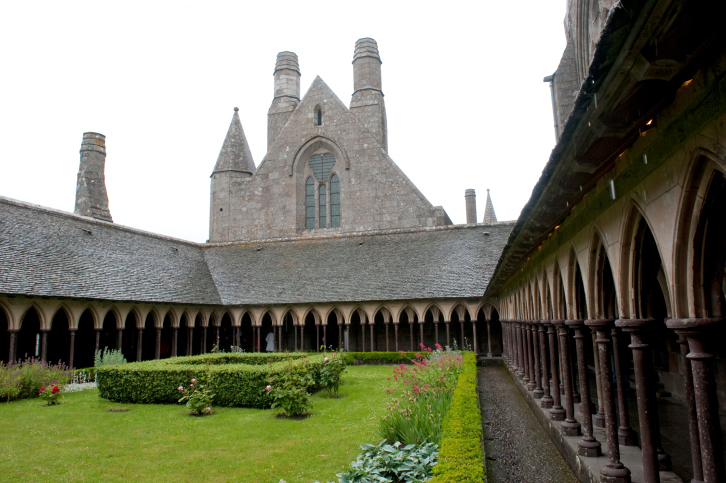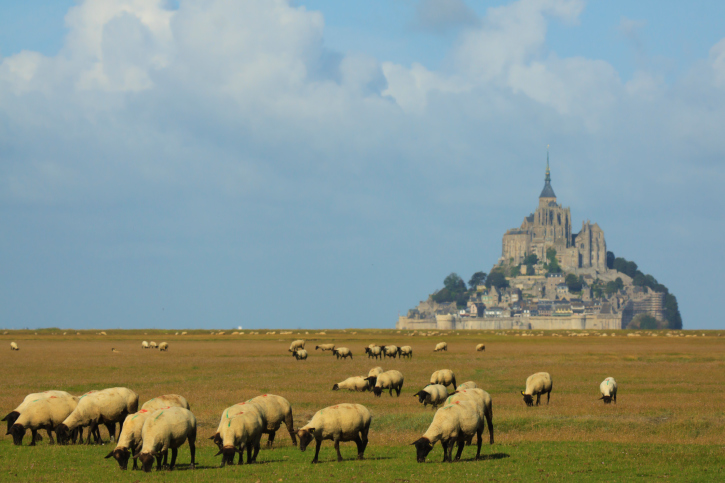Learn
|
As you have learned, verbs are either regular or irregular. Regular verbs, including ER, IR, and RE verbs, follow a pattern. For example, ER verbs take the endings: e, es, e, ons, ez, ent. Therefore, if you can conjugate one ER verb, you can conjugate all of them. Irregular verbs, on the other hand, do not follow a pattern, so it is best to memorize each irregular verb. You recently learned the verb faire. Although faire looks like a regular RE verb, it is not. Faire is an irregular verb, and its forms are: fais, fais, fait, faisons, faites, font. The next irregular verb you will learn is vouloir, which means to want. Read, study, and listen to the forms of vouloir.
You can combine the verb vouloir with many of the verbs you have learned. This will allow you to talk about things you want to do. When combining vouloir with another verb, conjugate vouloir and leave the second verb in the infinitive form. Read and study the examples below. Here are some examples:
To make the sentences negative, simply place the expression ne … pas around the conjugated verb. Read and study the examples below.
The irregular verb pouvoir, means to be able to or can. Read, study, and listen to the forms of pouvoir.
You can combine the verb pouvoir with many of the verbs you have learned. This will allow you to talk about the things you can do. When combining pouvoir with another verb, conjugate pouvoir and leave the second verb in the infinitive form. Read and study the examples below.
To make the sentences negative, simply place the expression ne … pas around the conjugated verb. Read and study the examples below.
The irregular verb devoir, means to have to or must. Read, study, and listen to the forms of devoir.
You can combine the verb devoir with many of the verbs you have learned. This will allow you to talk about the things you must do. When combining devoir with another verb, conjugate devoir and leave the second verb in the infinitive form. Read and study the examples below.
To make the sentences negative, simply place the expression ne … pas around the conjugated verb. Read and study the examples below.
The Western Wonder of the World Mont Saint-Michel is one of the best examples of Gothic and Medieval architecture in the world. The original church, built during the early 8th century, was just the beginning. In order to build the Abbey, heavy granite was carried by boats to the island and then hauled up the hill to be put in place. In the 11th century, Italian architect William de Volpiano designed the Romanesque portion of the Abbey. He decided to build directly on top of the summit of the mount. As a result, many crypts had to be built in order to support the Romanesque designed church. A crypt is a room or a vault located under a church and is used as a burial place or a location for secret meetings. Architect, Robert de Thorigny built the main portion of the church in the 12th century, and King Philip Augustus of France had the cloister and refectory built in the 13th century. A cloister is a covered walkway that opens into a courtyard, and a refectory is a dining hall.
During the Hundred Years War between England and France, the island was heavily fortified, as it was a strategic location for France. Although the English attempted more than once to take the island, they were never successful. In fact, to this day, the Abbey has never been taken by force. The protective ramparts around the island are still visible. By the beginning of the Reformation in the 16th century, there were very few pilgrims making their way to Mont Saint-Michel, and by the beginning of the French Revolution in the 18th century, nearly all the monks had left the Abbey. For a brief period during the French Revolution, the Abbey became a prison.
It was not until approximately 1836 that Mont Saint-Michel began to get some long-needed attention. It was the prominent personalities of French people, such as Victor Hugo, who began the campaign for the Abbey to be restored. In 1873, the French government declared Mont Saint-Michel a national monument, and in 1979, it was added to UNESCO's list as a World Heritage Site. When visitors go to the Abbey these days, it is evident that much has changed, as they pass by the modern souvenir shops and cafés. However, as they make their way up the winding path to the top of the Mount, they are doing so just like the pilgrims did over 1,000 years ago. Mont Saint-Michel is the third most visited site in France with more than 2.5 million visitors each year. It is no wonder why Mont Saint-Michel is often referred to as the Western Wonder of the World.
References "Abbey Mont Saint-Michel, France - (©)AIRPANO.COM - Project by Oleg Gaponyuk." AirPano.com. N.p., n.d. Web. 22 July 2014. "Abbaye Du Mont-Saint-Michel - Centre Des Monuments Nationaux." Abbaye Du Mont-Saint-Michel - Centre Des Monuments Nationaux. N.p., n.d. Web. 22 July 2014. "Accueil." Site Officiel De L'office De Tourisme Du Mont Saint Michel. N.p., n.d. Web. 22 July 2014. Dictionary.com. Dictionary.com, n.d. Web. 22 July 2014. "France's Mont St-Michel: Magnificence on a Mudflat." France's Mont St-Michel by Rick Steves. N.p., n.d. Web. 22 July 2014. "Mont-Saint-Michel and Its Bay." - UNESCO World Heritage Centre. N.p., n.d. Web. 22 July 2014. "Official Normandy Tourist Board Website - Holidays and Weekend Breaks in Normandy - Normandy Tourism, France." Official Normandy Tourist Board Website - Holidays and Weekend Breaks in Normandy - Normandy Tourism, France. N.p., n.d. Web. 22 July 2014. |
|||||||||||||||||||||||||||||||||||||||||||||||||||||||||||||||


